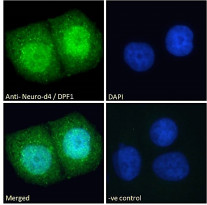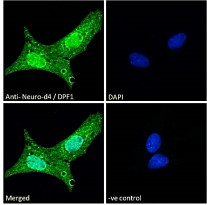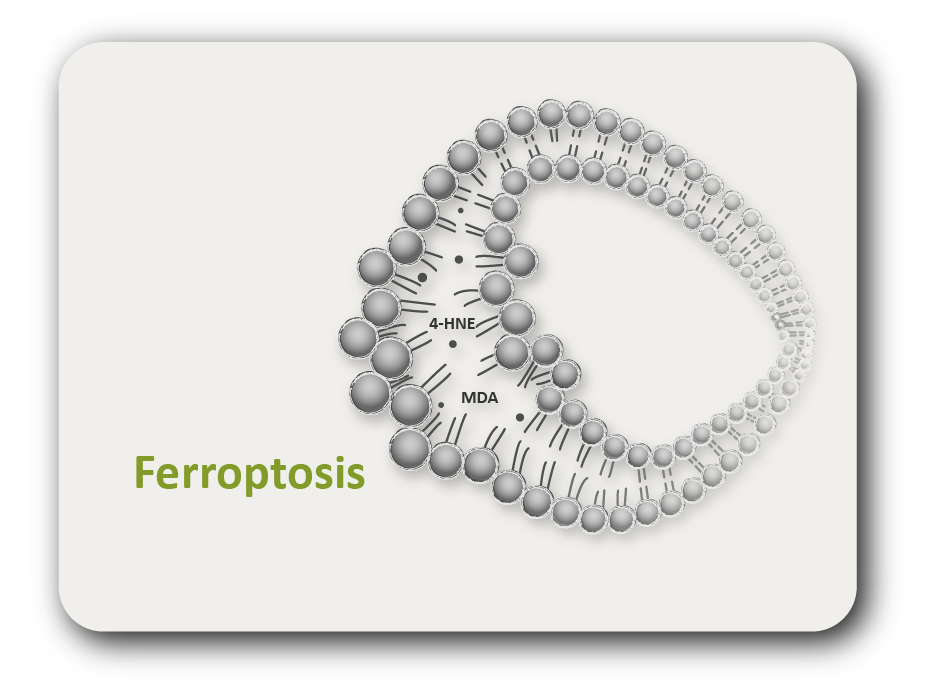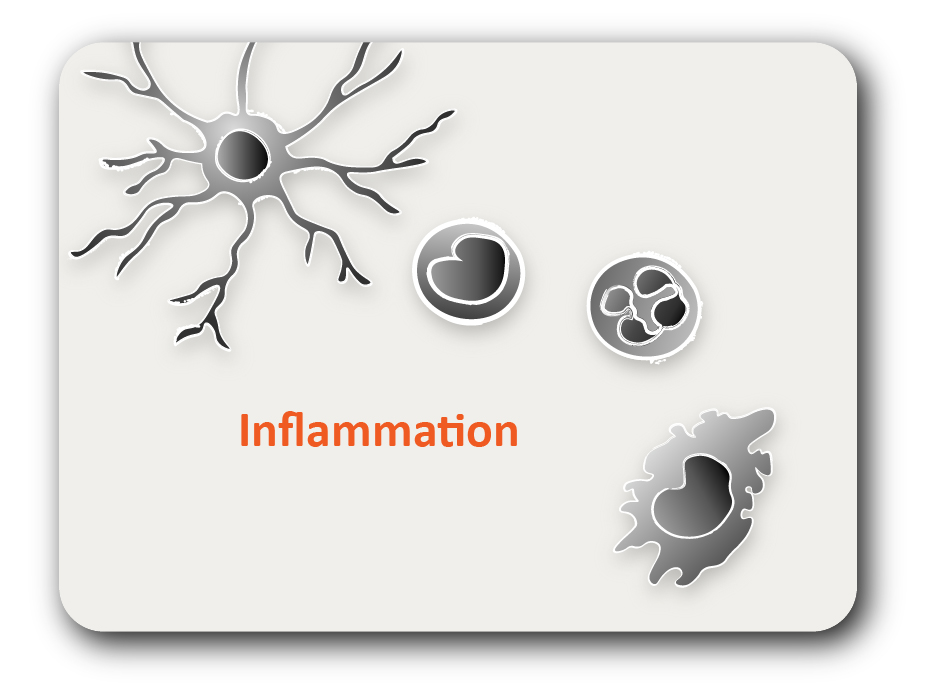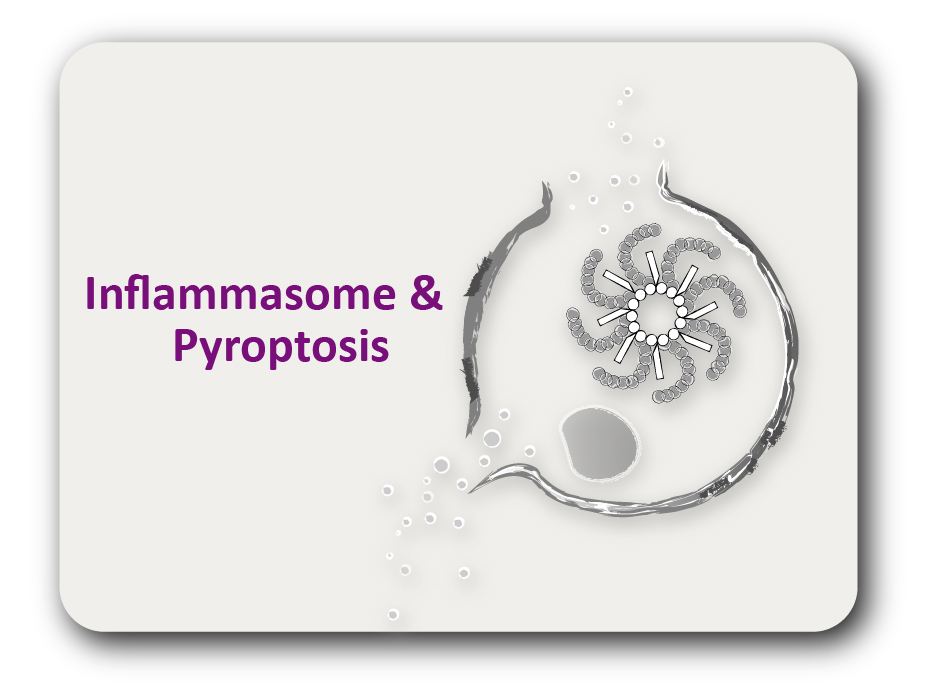ARG63259
anti-DPF1 / Neuro-d4 antibody
anti-DPF1 / Neuro-d4 antibody for ICC/IF and Human
Gene Regulation antibody; Neuroscience antibody
Overview
| Product Description | Goat Polyclonal antibody recognizes DPF1 / Neuro-d4 |
|---|---|
| Tested Reactivity | Hu |
| Predict Reactivity | Ms, Rat, Cow |
| Tested Application | ICC/IF |
| Specificity | This antibody is expected to recognize all three reported isoforms (NP_001128627.1; NP_004638.2; NP_001128628.1). |
| Host | Goat |
| Clonality | Polyclonal |
| Isotype | IgG |
| Target Name | DPF1 / Neuro-d4 |
| Antigen Species | Human |
| Immunogen | C-HLKEKASAYITLT |
| Conjugation | Un-conjugated |
| Alternate Names | Zinc finger protein neuro-d4; BAF45b; D4, zinc and double PHD fingers family 1; BAF45B; BRG1-associated factor 45B; NEUD4; neuro-d4 |
Application Instructions
| Application Suggestion |
|
||||
|---|---|---|---|---|---|
| Application Note | * The dilutions indicate recommended starting dilutions and the optimal dilutions or concentrations should be determined by the scientist. |
Properties
| Form | Liquid |
|---|---|
| Purification | Purified from goat serum by antigen affinity chromatography. |
| Buffer | Tris saline (pH 7.3), 0.02% Sodium azide and 0.5% BSA. |
| Preservative | 0.02% Sodium azide |
| Stabilizer | 0.5% BSA |
| Concentration | 0.5 mg/ml |
| Storage Instruction | For continuous use, store undiluted antibody at 2-8°C for up to a week. For long-term storage, aliquot and store at -20°C or below. Storage in frost free freezers is not recommended. Avoid repeated freeze/thaw cycles. Suggest spin the vial prior to opening. The antibody solution should be gently mixed before use. |
| Note | For laboratory research only, not for drug, diagnostic or other use. |
Bioinformation
| Database Links | |
|---|---|
| Gene Symbol | DPF1 |
| Gene Full Name | D4, zinc and double PHD fingers family 1 |
| Function | May have an important role in developing neurons by participating in regulation of cell survival, possibly as a neurospecific transcription factor. Belongs to the neuron-specific chromatin remodeling complex (nBAF complex). During neural development a switch from a stem/progenitor to a post-mitotic chromatin remodeling mechanism occurs as neurons exit the cell cycle and become committed to their adult state. The transition from proliferating neural stem/progenitor cells to post-mitotic neurons requires a switch in subunit composition of the npBAF and nBAF complexes. As neural progenitors exit mitosis and differentiate into neurons, npBAF complexes which contain ACTL6A/BAF53A and PHF10/BAF45A, are exchanged for homologous alternative ACTL6B/BAF53B and DPF1/BAF45B or DPF3/BAF45C subunits in neuron-specific complexes (nBAF). The npBAF complex is essential for the self-renewal/proliferative capacity of the multipotent neural stem cells. The nBAF complex along with CREST plays a role regulating the activity of genes essential for dendrite growth (By similarity). [UniProt] |
| Research Area | Gene Regulation antibody; Neuroscience antibody |
| Calculated MW | 43 kDa |
Images (2) Click the Picture to Zoom In
-
ARG63259 anti-DPF1 / Neuro-d4 antibody ICC/IF image
Immunofluorescence: Paraformaldehyde fixed MCF7 cells permeabilized with 0.15% Triton. Cells were stained with ARG63259 anti-DPF1 / Neuro-d4 antibody (green) at 10 µg/ml dilution for 1 hour. DAPI (blue) for nuclear staining. Negative control: Unimmunized goat IgG (green) at 10 µg/ml dilution.
-
ARG63259 anti-DPF1 / Neuro-d4 antibody ICC/IF image
Immunofluorescence: Paraformaldehyde fixed U2OS cells permeabilized with 0.15% Triton. Cells were stained with ARG63259 anti-DPF1 / Neuro-d4 antibody (green) at 10 µg/ml dilution for 1 hour. DAPI (blue) for nuclear staining. Negative control: Unimmunized goat IgG (green) at 10 µg/ml dilution.
